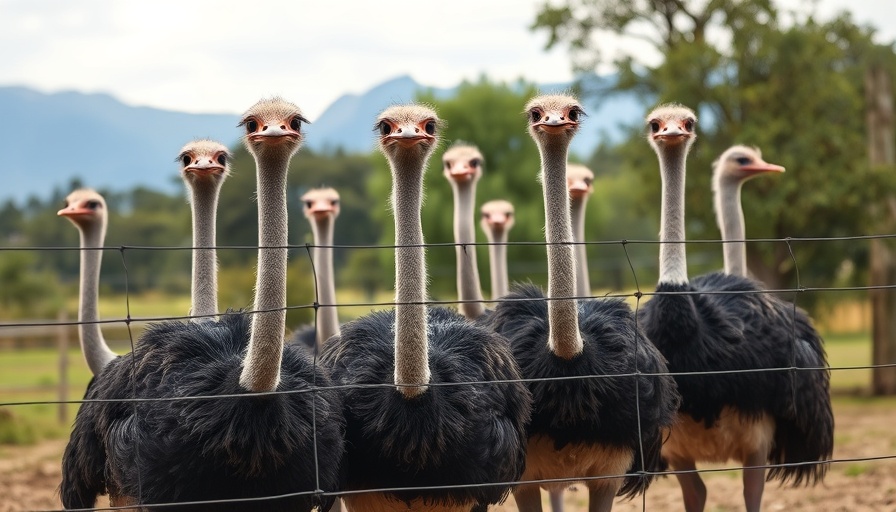
The Controversy Surrounding the Ostrich Cull
Recently, Robert F. Kennedy Jr., former U.S. secretary for health and human services, has sparked a critical conversation regarding a planned culling of ostriches due to avian flu concerns at a farm in British Columbia, Canada. Kennedy’s letter to the Canadian Food Inspection Agency (CFIA) has raised eyebrows internationally, emphasizing the potential scientific value in studying the immune responses of these birds to the disease.
Kennedy argues that these ostriches, specifically from the Universal Ostrich Farm in Edgewood, could provide valuable insights into flu resistance and hold the key to developing new vaccines and therapeutics. The inclusion of leading figures from the U.S. Food and Drug Administration and National Institutes of Health in his appeal highlights the serious nature of this discussion, validating the significance of biomedical collaboration across borders.
The Implications of Culling
While the cull has been legally upheld in recent court rulings, the broader implications of such actions merit serious consideration. The avian flu, while posing a threat to bird populations and potentially to humans, presents an opportunity to learn about zoonotic diseases—those that can transfer from animals to humans. With avian flu outbreaks documented in multiple countries, understanding how certain species, like ostriches, respond to infections could revolutionize how public health manages future pandemics.
Public Reaction and Animal Welfare Concerns
Animal welfare advocates have criticized the culling measures not just for ethical reasons, but also for their long-term effectiveness in combating disease spread. Many argue that culling is a short-sighted solution that overlooks the potential for better management practices and research collaboration, as proposed by Kennedy. The emotional undercurrents of this debate are palpable—how do we balance animal rights with public health concerns?
Scientific Collaboration: A Potential Path Forward
The notion of collaboration between the United States and Canada is crucial in addressing these wider issues surrounding animal populations and human health. By allowing researchers to study the ostriches instead of culling them, a wealth of knowledge could potentially be unlocked that informs not only avian flu research but also broader insights into immunology. A focus on educational outreach and cooperative studies could pave the way for innovative approaches to public health challenges.
Changing Perspectives on Farm Animal Management
This situation begs the question: Are we at a tipping point with regards to how we manage farm animals in the face of emerging diseases? Recent shifts toward sustainability and a greater emphasis on ethical treatment of animals signal a growing discontent with quick fixes like culling. Instead, lasting solutions rooted in scientific understanding and ethical responsibility may provide a way forward that satisfies both public health needs and concerns for animal welfare.
What Lies Ahead for the Ostriches?
As Kennedy’s initiative unfolds, it will be essential for both the Canadian and U.S. governments to consider the broader implications of their decisions. Could the outcome here set a precedent for how animals are treated in disease outbreaks in the future? Trust in government decisions hinges on transparency, and the collaboration suggested by Kennedy may be a step toward rebuilding that trust.
Ultimately, addressing the avian flu threat requires a multifaceted approach, one that considers both the scientific and ethical ramifications of actions taken against wildlife. By studying the 400 ostriches scheduled for culling, researchers may be able to contribute to a better understanding of flu resistance, bridging the gap between public health and animal welfare.
Conclusion
The conversation surrounding this cull reflects a foundational question in modern society: how do we balance immediate public health responses with long-term ecological and ethical considerations? As this scenario continues to unfold, it will be critical for stakeholders at all levels to engage in a dialogue that values both human and animal health.
As we ponder these complexities, consider taking action by advocating for collaborative research efforts and engaging in discussions around animal welfare practices. The future of public health may depend on these choices.
 Add Row
Add Row  Add
Add 




 Add Row
Add Row  Add
Add 

Write A Comment